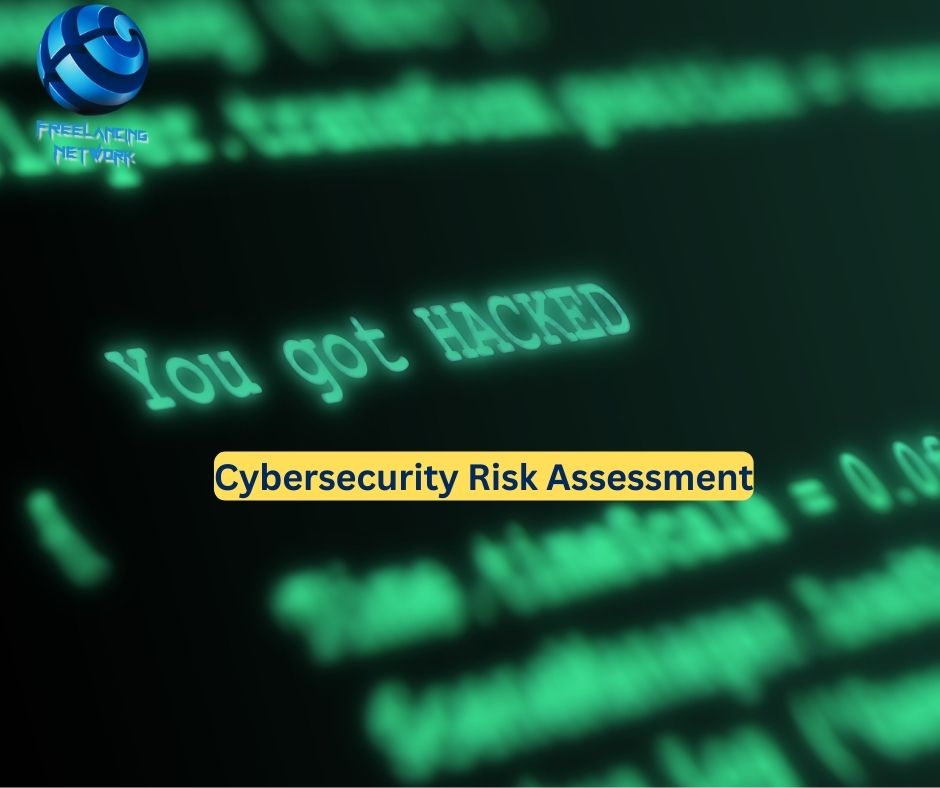Cybersecurity risk assessment is the process of identifying, evaluating, and prioritizing potential threats to a business’s IT systems, assets, and data. The assessment helps businesses to understand their risks and develop strategies to mitigate them. In this article, we’ll explore the importance of cybersecurity risk assessment and how businesses can perform one effectively.
Cybersecurity is a critical aspect of every business. With the growing number of cyber threats, it’s important to assess your business’s security risks and take necessary measures to protect your sensitive data and assets. Cybersecurity risk assessment is the process of identifying, analyzing, and evaluating potential security threats to your business’s systems, networks, and applications.
Why Is Cybersecurity Risk Assessment Important?
A cybersecurity risk assessment is important for several reasons:
- Identifying vulnerabilities: A risk assessment helps you identify potential weaknesses in your security systems, such as outdated software, weak passwords, or lack of security policies.
- Measuring potential impact: A risk assessment helps you understand the potential impact of a security breach on your business, such as financial loss, reputation damage, or legal liabilities.
- Developing a risk management plan: A risk assessment helps you develop a risk management plan that outlines steps to prevent, mitigate, and respond to potential security threats.
How to Conduct a Cybersecurity Risk Assessment?
- Identify assets: Identify all the assets that need to be protected, such as hardware, software, data, and personnel.
- Identify threats: Identify potential threats that could affect your business, such as malware, phishing attacks, insider threats, or natural disasters.
- Assess vulnerabilities: Assess the vulnerabilities in your systems, networks, and applications that could be exploited by potential threats.
- Determine likelihood and impact: Determine the likelihood and impact of each potential threat, and prioritize them based on their severity.
- Develop a risk management plan: Develop a risk management plan that outlines steps to prevent, mitigate, and respond to potential security threats.
What is a Cybersecurity Assessment Tool?
A Cybersecurity Assessment Tool is a software or web-based application that is designed to help organizations assess their current cybersecurity posture and identify potential vulnerabilities and threats. These tools typically provide a framework for conducting an assessment, including a set of questions or criteria that can be used to evaluate an organization’s security practices and infrastructure.
The assessment tool may cover a wide range of areas, such as network security, data protection, access controls, incident response planning, and compliance with industry or regulatory standards. The tool may also provide guidance on best practices for addressing identified risks and improving overall security.
Some Cybersecurity Assessment Tools are designed for use by specific industries or types of organizations, such as healthcare or financial institutions, while others are more general and can be used by any organization. Some tools are also designed to be self-assessments, while others may require the assistance of a cybersecurity professional.
Overall, Cybersecurity Assessment Tools can be a valuable resource for organizations looking to assess their current security posture and identify areas for improvement. However, it’s important to remember that no tool can provide a complete picture of an organization’s security and that regular assessments and ongoing security efforts are necessary to stay ahead of the ever-evolving threat landscape.
What are the 5 steps to cyber security risk assessment?
Cybersecurity risk assessment is the process of identifying, evaluating, and prioritizing potential threats and vulnerabilities in a system or network. It is an essential step towards securing your business against cyber threats. In this article, we will discuss the 5 steps to a successful cybersecurity risk assessment.
Step 1: Identify the assets to be protected The first step in a cybersecurity risk assessment is to identify the assets that need to be protected. This includes all the hardware, software, and data that your business relies on. Make a list of all the assets and prioritize them based on their importance to your business.
Step 2: Identify the threats The second step is to identify the threats that your business may face. This includes both internal and external threats such as hacking, viruses, and malware. It is important to consider all possible threats, no matter how unlikely they may seem.
Step 3: Assess the vulnerabilities Once you have identified the threats, the next step is to assess the vulnerabilities in your system or network. This includes looking at potential weaknesses in hardware, software, and human error. It is important to identify vulnerabilities that may be exploited by cyber attackers.
Step 4: Evaluate the risks After identifying the threats and vulnerabilities, the next step is to evaluate the risks to your business. This involves assessing the likelihood and impact of each threat, as well as the cost of mitigating each risk. It is important to prioritize the risks based on their potential impact to your business.
Step 5: Develop a risk management plan The final step is to develop a risk management plan to address the identified risks. This plan should include measures to mitigate the risks, such as implementing security controls, training employees, and regularly monitoring the system or network for potential threats.
Title: 5 Steps to a Successful Cybersecurity Risk Assessment for Your Business
Conclusion
A cybersecurity risk assessment is an important step towards protecting your business from potential security threats. By identifying vulnerabilities, measuring potential impact, and developing a risk management plan, you can ensure that your business is prepared to face any potential security threat. Remember, cybersecurity is an ongoing process, and regular assessments and updates are necessary to maintain a strong security posture.
Cybersecurity services for small business

